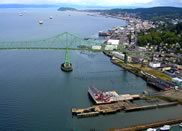|
History
Astoria, Oregon is rich in history with historic museums and parks. Fort Clatsop National Memorial commemorates the western end of the Lewis & Clark Trail. (It was on a wet Christmas Eve day in 1805 that Lewis & Clark and their Corps of Discovery moved into a stockade fort surrounded by lush old-growth forest, wetlands and wildlife and rested from their arduous 2,000 mile westward journey. Fort Clatsop, the winter encampment site of the Lewis and Clark Expedition, was named in honor of the local Clatsop Indians.)
The city of Astoria is the county seat of Clatsop County, Oregon, United States. Situated near the mouth of the Columbia River, the city was named after the American investor (and first millionaire) John Jacob Astor. His fur trading company founded Fort Astoria at the site in 1810. Astoria was incorporated by the Oregon Legislative Assembly on October 20, 1876.
 The Lewis and Clark Expedition spent the winter of 1805-1806 at Fort Clatsop, a small log structure south and west of modern day Astoria. The expedition had hoped a ship would come by to take them back east, but instead endured a torturous winter of rain and cold, then returned east the way they came. Today the fort has been recreated and is now a national monument. The Lewis and Clark Expedition spent the winter of 1805-1806 at Fort Clatsop, a small log structure south and west of modern day Astoria. The expedition had hoped a ship would come by to take them back east, but instead endured a torturous winter of rain and cold, then returned east the way they came. Today the fort has been recreated and is now a national monument.
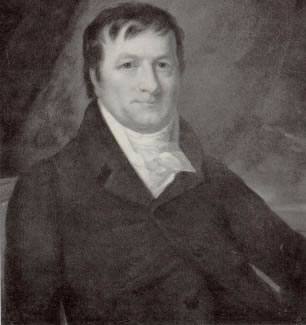 In 1810, John Jacob Astor's Pacific Fur Company sent the Astor Expedition that founded Fort Astoria as its primary fur-trading post in the Northwest, and in fact the first permanent U.S. settlement on the Pacific coast. It was an extremely important post for American exploration of the continent and was influential in establishing American claims to the land. In 1810, John Jacob Astor's Pacific Fur Company sent the Astor Expedition that founded Fort Astoria as its primary fur-trading post in the Northwest, and in fact the first permanent U.S. settlement on the Pacific coast. It was an extremely important post for American exploration of the continent and was influential in establishing American claims to the land.
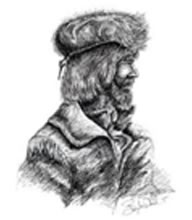 British explorer David Thompson was the first European to navigate the entire length of the Columbia River in 1811. Thompson reached the partially constructed Fort Astoria at the mouth of the Columbia, arriving two months after the Pacific Fur Company's ship, the Tonquin. British explorer David Thompson was the first European to navigate the entire length of the Columbia River in 1811. Thompson reached the partially constructed Fort Astoria at the mouth of the Columbia, arriving two months after the Pacific Fur Company's ship, the Tonquin.
The Pacific Fur Company failed, however, and the fort and fur trade were sold to the British in 1813. The house was restored to the U.S. in 1818, though the fur trade would remain under British control until American pioneers following the Oregon Trail began filtering into the port town in the mid-1840s. The Treaty of 1818 established joint U.S. - British occupancy of territory west of the continental divide to the Pacific Ocean. In 1846 the Oregon Treaty ended the Oregon Boundary Dispute; with Britain ceding all right to the mainland south of the 49th Parallel.
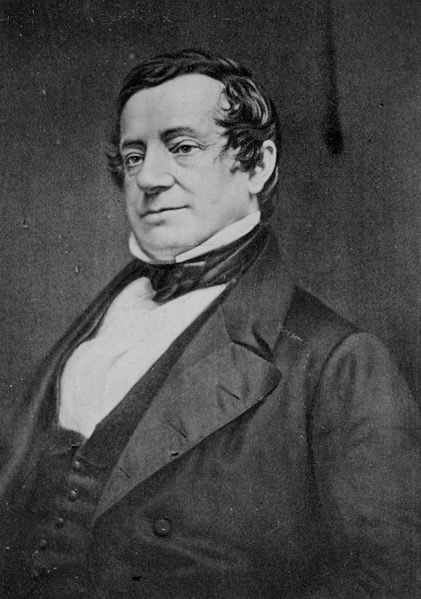 Washington Irving, a prominent American writer with a European reputation, was approached by John Jacob Astor to mythologize the three-year reign of his Pacific Fur Company. Astoria (1835), written while Irving was Astor's guest, cemented the importance of the region in the American psyche. In Irving's words, the fur traders were "Sinbads of the wilderness," and their venture was a staging point for the spread of American economic power into both the continental interior and into the Pacific. Washington Irving, a prominent American writer with a European reputation, was approached by John Jacob Astor to mythologize the three-year reign of his Pacific Fur Company. Astoria (1835), written while Irving was Astor's guest, cemented the importance of the region in the American psyche. In Irving's words, the fur traders were "Sinbads of the wilderness," and their venture was a staging point for the spread of American economic power into both the continental interior and into the Pacific.
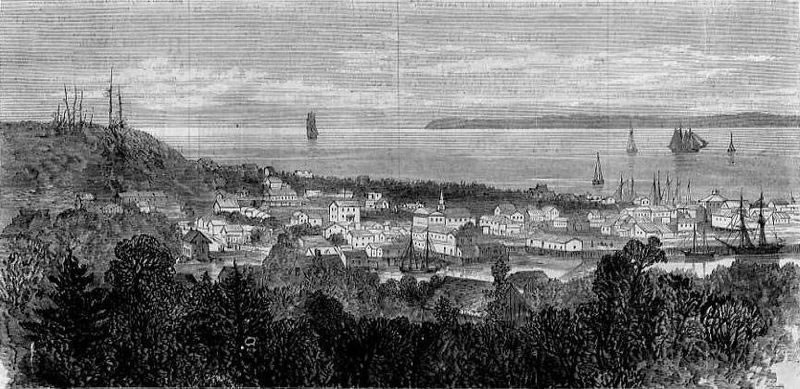 As the Oregon Territory grew and became increasingly more settled, Astoria likewise grew as a port city at the mouth of the great river that provided the easiest access to the interior. The first U.S. Post Office west of the Rocky Mountains was established in Astoria in 1847. In 1876, the community was legally incorporated. It attracted a host of immigrants beginning in the late-nineteenth century: Scandinavian settlers, primarily Finns, and Chinese soon became significant parts of the population. The Finns mostly lived in Uniontown, near the present-day end of the Astoria-Megler Bridge, and took fishing jobs; the Chinese tended to do cannery work, and usually lived either downtown or in bunkhouses near the canneries. In 1883, and again in 1922, downtown Astoria was devastated by fire, partly because it was mostly wood and entirely raised off the marshy ground on pilings. Even after the first fire, the same format was used, and the second time around the flames spread quickly again, as collapsing streets took out the water system. Frantic citizens resorted to dynamite, blowing up entire buildings to stop the fire from going further. As the Oregon Territory grew and became increasingly more settled, Astoria likewise grew as a port city at the mouth of the great river that provided the easiest access to the interior. The first U.S. Post Office west of the Rocky Mountains was established in Astoria in 1847. In 1876, the community was legally incorporated. It attracted a host of immigrants beginning in the late-nineteenth century: Scandinavian settlers, primarily Finns, and Chinese soon became significant parts of the population. The Finns mostly lived in Uniontown, near the present-day end of the Astoria-Megler Bridge, and took fishing jobs; the Chinese tended to do cannery work, and usually lived either downtown or in bunkhouses near the canneries. In 1883, and again in 1922, downtown Astoria was devastated by fire, partly because it was mostly wood and entirely raised off the marshy ground on pilings. Even after the first fire, the same format was used, and the second time around the flames spread quickly again, as collapsing streets took out the water system. Frantic citizens resorted to dynamite, blowing up entire buildings to stop the fire from going further.
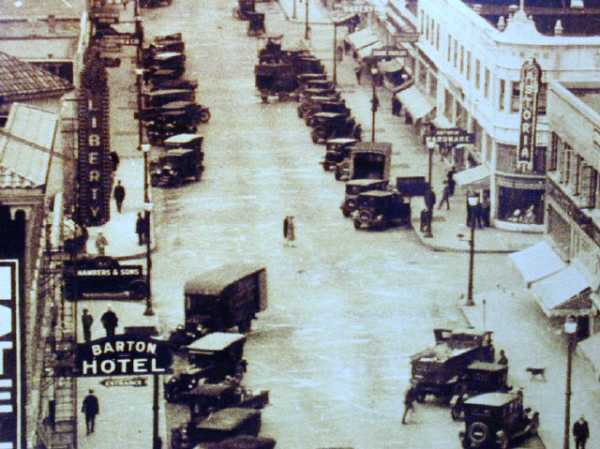 Business and civic leaders with the help of the average citizen all banded together and slowly restored and rebuilt the city basically from scratch. Today the downtown core, with the exception of a few newer buildings, still resembles the architecture of the 1920's. It still has a perfectly intact main street U.S.A. with two to three story buildings. Business and civic leaders with the help of the average citizen all banded together and slowly restored and rebuilt the city basically from scratch. Today the downtown core, with the exception of a few newer buildings, still resembles the architecture of the 1920's. It still has a perfectly intact main street U.S.A. with two to three story buildings.
An Adventure In History
|


